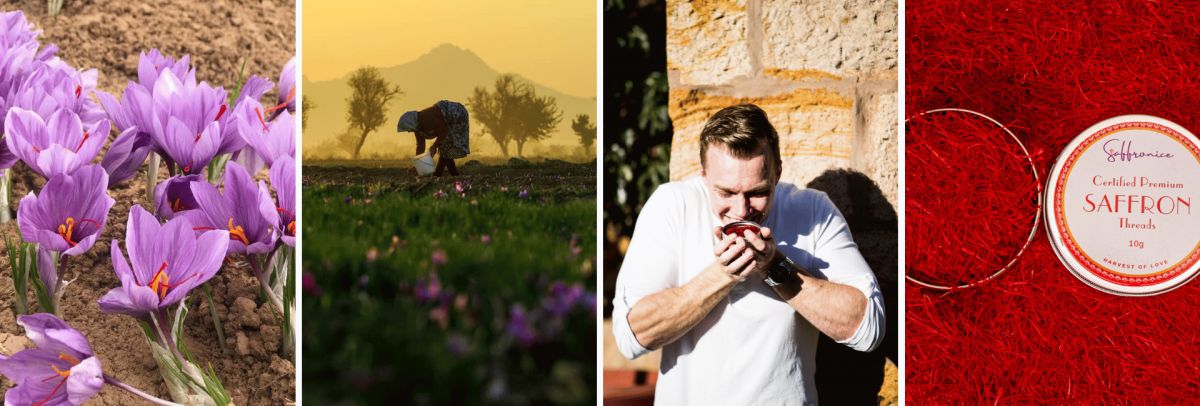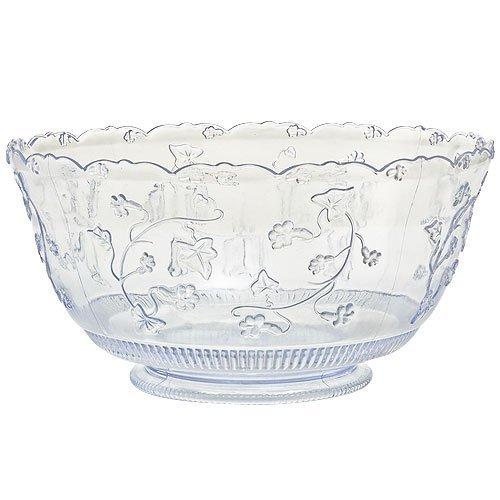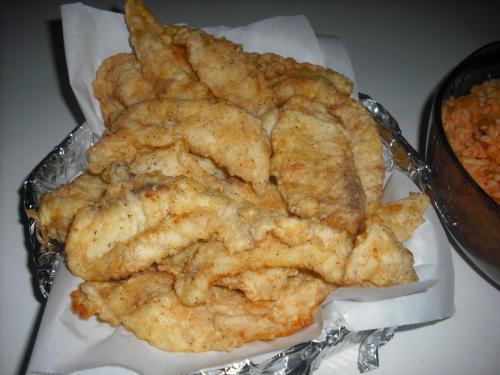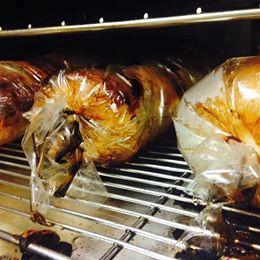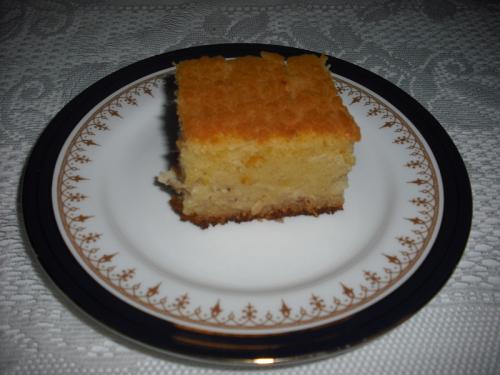Saffron, often referred to as "red gold," is the world's most valuable spice, derived from the delicate stigmas of the Crocus sativus plant. This vibrant thread has long been revered for its unique flavor, aroma, and intense color; it's a symbol of tradition and luxury that enriches both the palate and culture. Across continents and ages, saffron has woven a tapestry of historical significance, marking its place as a culinary and medicinal staple.
In this article, we will explore:
The history and cultural significance of saffron
The meticulous production process
Its role in global cuisine
Acclaimed health benefits
Leading producers contributing to this spice's global tapestry.
The economics driving its value.
Tips on preserving saffron's excellence at home
Its enduring allure as more than just a spice — but a cultural icon
Discovering saffron goes beyond just reading; it's an invitation to experience tradition, luxury, and flavor. For those eager to bring a touch of this luxury into their own kitchens, you can try cooking Saffron Rice the Persian way. The Persian method of cooking saffron rice is entirely unique and offers an incredible culinary experience that you can enjoy with your family.
Additionally, you can enhance your dishes with Pure Saffron Powder, renowned for its exquisite aroma, flavor, and color. This handpicked and 100% natural powder conveniently packaged for your culinary needs will take your saffron-infused dishes to new heights of sensory delight.
The History and Cultural Significance of Saffron
The history of saffron is steeped in richness and vibrancy, much like the spice itself. With roots that trace back over 3,000 years, saffron has been highly regarded across various civilizations for its diverse applications in dyeing, perfumery, and medicine.
Ancient Uses of Saffron
Egyptian Influence
The ancient Egyptians were captivated by saffron's vivid color. They harnessed its hue to create striking wall paintings and incorporated it into their cosmetic rituals.
"Saffron held immense value in ancient Egypt, not just as a dye but also as a cosmetic enhancer. Its vibrant color adorned their wall paintings and added a touch of luxury to their beauty regimens."
Persian Influence
Saffron was equally treasured by the Persians for its aromatic properties. It became a staple ingredient in perfumes and was considered sacred, finding its place in various ceremonial practices.
"Persian culture deeply revered saffron. Its delightful fragrance made it a sought-after choice for perfumes, while its presence in sacred rituals symbolized purity and enlightenment."
Medicinal Uses of Saffron
Beyond its aesthetic allure, saffron boasts a storied medicinal history. Traditional healing systems like Ayurveda and Chinese medicine have long revered saffron for its therapeutic benefits, spanning from heart palpitations to digestive ailments.
"In ancient healing practices such as Ayurveda and Chinese medicine, saffron was highly regarded for its medicinal properties. It was believed to alleviate symptoms of various conditions, including heart palpitations and digestive issues."
For those intrigued by these age-old medicinal uses of saffron, Saffronice's FAQ page offers a wealth of information.
Culinary Significance
Equally important is saffron's culinary significance. This precious spice serves as more than just an ingredient; it is a culinary symbol cherished across cultures.
"Saffron is not merely a spice; it holds deep cultural significance in the culinary world."
From the aromatic biryanis of India to the comforting risottos of Italy, saffron has found its way into the heart of traditional cuisines worldwide. The beautiful threads lend a characteristic depth of flavor and striking color to dishes, making them as visually appealing as they are delicious.
To explore a vast range of saffron-infused delicacies or health products crafted with utmost purity, visit Saffronice's comprehensive product collection.
The Saffron Production Process
Saffron, also known as the 'red gold', comes from the Crocus Sativus plant. This delicate and beautiful plant produces stunning purple flowers, each containing the valuable saffron threads.
1. Planting the Bulbs
The cultivation of saffron begins in summer with the planting of crocus bulbs.
2. Blooming of Flowers
As autumn arrives, these bulbs transform into exquisite purple flowers.
3. Harvesting at Dawn
During the early hours of dawn, skilled workers carefully pluck each flower and extract its three crimson stigmas – the precious saffron threads.
4. Drying Process
After harvesting, the stigmas undergo a meticulous drying process that not only preserves them but also enhances their flavor and aroma, resulting in the deep red-orange color characteristic of saffron.
5. Low Yield Ratio
One remarkable aspect of saffron production is its low yield ratio. Each flower yields only a few threads, meaning it takes thousands of flowers to produce just one pound of this luxurious spice. This scarcity contributes to saffron being one of the most expensive spices worldwide.
Intrigued by this fascinating process? Why not experience this culinary gem firsthand? Elevate your dishes with premium quality saffron available in a 10-gram tin from our collection. Harvested from the finest non-GMO saffron crocus bulbs, this precious spice is a testament to our commitment to delivering exceptional quality.
Saffron in Cuisine and Recipes
Saffron is a widely-known spice that adds a special touch to famous dishes from around the world. Its strong aroma, rich flavor, and vibrant color make it perfect for enhancing various recipes, such as Indian biryanis, Spanish paellas, and Persian rice/stews.
In this section, we'll explore two popular recipes that feature saffron as a key ingredient.
1. Seafood Paella
Originating from Spain's Valencian region, this delightful dish showcases saffron's color-enhancing properties. The deep red-orange threads are steeped in warm water to release their pigment before being added to the simmering mixture of rice, seafood, vegetables, and seasonings. The result? A visually stunning and deliciously aromatic meal that's worth every bit of effort.
Ingredients:
Saffron threads
Arborio rice
Assorted seafood
Green beans
Red bell pepper
Olive oil
Paprika
2. Saffron-infused Ice Cream/Pastries
A favorite across the Middle East and South Asia, saffron-infused desserts offer an exotic twist on familiar treats. Infuse your ice cream or pastries with a few strands of this precious spice for an unforgettable sensory experience.
Ingredients:
Saffron threads
Milk or cream
Sugar
Vanilla extract
Whether enjoyed in savory dishes like paellas or indulged in sweet treats like ice cream, saffron adds something special to every bite. These recipes demonstrate not only its versatility but also its ability to turn ordinary ingredients into extraordinary creations.
Saffron's Health Benefits and Medicinal Uses
Renowned for more than its culinary prowess, saffron boasts an array of health benefits that have been celebrated for millennia. This antioxidant-rich spice contributes significantly to wellness and has been studied for its therapeutic potential.
Antioxidant Properties
Saffron is packed with antioxidants, which combat oxidative stress and cellular damage. These compounds are pivotal in promoting longevity and preventing chronic diseases.
Cardiovascular Well-being
Regular consumption of saffron may aid heart health. Its various components can positively influence blood pressure levels and circulatory function, making it a heart-friendly addition to any diet.
Mood Improvement and Mental Health
As a potential natural antidepressant, saffron has shown promise in improving mood and treating symptoms related to depression and anxiety. Its mood-enhancing properties make it a valuable component of mental wellness practices.
Anti-inflammatory Effects
The anti-inflammatory properties of saffron can provide relief from pain and discomfort associated with inflammation, offering a natural remedy for various ailments.
Traditional Medicine
Ayurvedic Medicine:
In Ayurveda, saffron is revered for its ability to balance the body’s energies, known as doshas. It has been used to uplift mood, improve digestion, and as a tonic for overall vitality.
Chinese Medicine:
Chinese practitioners have utilized saffron to address issues related to the heart and liver, capitalizing on its purported abilities to soothe the heart and calm nerves.
Modern Applications
Today, saffron continues to be integrated into modern wellness routines:
Supplements containing saffron extract aim to harness its health benefits in concentrated form.
Herbal teas infused with saffron threads offer a soothing way to enjoy its therapeutic effects while indulging in its unique flavor profile.
The therapeutic versatility of saffron positions it not only as a culinary gem but also as a cornerstone in both traditional and contemporary health practices.
Global Saffron Production and Key Players
Saffron is not only a sought-after spice but also a testament to the rich agricultural practices of certain regions. Among the saffron-growing areas, four countries notably stand out:
Iran
Dominating the market with approximately 90% of the world's supply, Iranian saffron is often considered the gold standard. The country's arid climate and fertile soil contribute to the production of saffron with a strong color and intense flavor, making it highly prized in both local and international markets.
Spain
Known for its vibrant culture and rich traditions, Spain takes pride in its saffron harvest, celebrated annually through festivals. Spanish saffron is renowned for its delicate flavor and is a key ingredient in many traditional Spanish dishes.
Greece
Greek saffron, particularly from the Kozani region (also referred to as Krokos), is acclaimed for its bright coloration and aromatic profile. The cultivation techniques passed down through generations ensure a product that stands out for its quality.
India
The Kashmiri variety from India is treasured for its deep red color and exceptional flavor. Despite lower production volumes compared to Iran, Indian saffron holds a special place in culinary applications both domestically and internationally.
Each of these countries brings forth a unique character in their saffron that reflects their diverse cultivation techniques and terroir. By understanding the distinct attributes of each region’s produce, connoisseurs and enthusiasts can appreciate the nuances that make this spice truly global yet uniquely local.
The Economics of Saffron: Price Determinants and Quality Assessment
Saffron is a spice surrounded by tales of opulence and rarity, often reflected in its price. The saffron price can vary significantly and be influenced by various factors, including the labor-intensive harvesting process. Each Crocus sativus plant yields just a few precious threads, and it takes approximately 150,000 flowers to produce a kilogram of saffron. This intensive labor, along with the delicate nature of the harvesting process—often done by hand at dawn—contributes to its high cost.
The sensory attributes of saffron—such as color, aroma, and flavor—are critical determinants of its quality and thus its price. High-quality saffron boasts a deep red hue with orange tips, indicating a high concentration of the desired compounds such as crocin, which provides color, and picrocrocin and safranal, responsible for flavor and aroma.
Assessing Saffron Quality
When evaluating saffron quality, it's important to consider the following factors:
Visual Inspection: Look for uniformity in color with vivid crimson threads that have slight orange-red tips.
Aroma: Saffron should have a strong, fresh smell; a musky or metallic scent may indicate staleness or poor quality.
Flavor Profile: True saffron has a subtle earthiness with hints of honey; it should not taste overly bitter or have no flavor at all.
Purchasers can use these criteria to discern between grades of saffron. For example, the "Coupe" grade represents the highest quality available, whereas lower grades may include yellow-style material or broken-off thread pieces. As consumers navigate through these nuances, they gain insight into why saffron is often more expensive than other spices and how to select the best product for their culinary needs.
Preserving Saffron's Excellence: Storage Tips
Often called the most expensive spice in the world, saffron should be stored carefully. Proper storage keeps its threads fresh and maintains their flavors and colors.
To keep saffron aromatic and flavorful, remember these tips:
Protect from Sunlight: Light can damage saffron over time. Store it away from direct sunlight.
Keep in a Cool, Dark Place: Heat can also harm saffron. Store it in a cool, dark pantry to preserve its quality.
Use Airtight Containers: Oxygen exposure can cause saffron to lose its flavor. Store it in airtight containers to prevent this. Glass or metal containers are better options than plastic ones as they provide more protection against moisture and air.
By following these simple yet effective storage tips, you can enjoy high-quality saffron for a longer time.
The Enduring Allure of Saffron: From Spice to Cultural Icon
Saffron's appeal goes beyond its use in cooking. It holds symbolic meaning and cultural significance. Often called 'red gold', saffron has become a symbol of wealth and extravagance in many cultures. Its intense red color and captivating scent have intrigued people for centuries, leading to its prestigious position in various traditions worldwide.
A Symbol of Opulence and Luxury
Saffron's deep red hue and exquisite aroma have made it a sought-after ingredient in high-end cuisine and luxurious products. Its association with wealth and abundance can be traced back to ancient times, when it was used by royalty and nobility as a sign of their elevated status. Even today, saffron continues to be valued for its rarity and the meticulous process required to harvest it, making it one of the most expensive spices in the world.
Bridging Cultures Through Flavor
However, saffron's significance goes beyond its monetary value. It serves as a unifying element that transcends borders, bringing together diverse cultures through their shared love for this precious spice. Whether it's the lively celebrations of Spain, the aromatic biryanis of India, or the creamy risottos of Italy, each culture has found its own way to incorporate saffron into its traditional dishes, adding a distinct flavour profile that reflects its unique heritage.
Unveiling Cultural Identity
Every time saffron is used in a particular cuisine or ritual, it unveils a deeper layer of that culture's identity. It becomes more than just an ingredient; it becomes a symbol of tradition, history, and community. From the golden-hued desserts served during festive occasions to the vibrant yellow robes worn by Buddhist monks, saffron becomes an integral part of these cultural practices, carrying with it centuries-old meanings and beliefs.
A Testimony to Nature's Beauty
Saffron's journey from flower to spice is a testament to the wonders of nature. Each delicate stigma must be carefully handpicked, requiring patience, skill, and attention to detail. This labor-intensive process highlights the dedication of farmers and artisans who work tirelessly to bring this precious spice to our tables.
The Timeless Allure
Despite the passage of time and the emergence of new flavors, saffron's allure remains undiminished. Its ability to evoke emotions, create sensory experiences, and connect people across generations is what makes it truly special. Whether it's adding a pinch of saffron to elevate a dish or simply enjoying its aromatic fragrance, saffron continues to captivate hearts and palates around the world.
Saffron's rich history and multifaceted symbolism make it a truly remarkable spice. It stands as a testament to mankind's enduring appreciation for nature's gifts, creating an indelible connection between our culinary past and present. This bond enriches our gastronomic experiences and solidifies saffron's place as a beloved staple in kitchens worldwide.
Cultivating Appreciation for Saffron
Saffron can take you on a delightful adventure. Its special taste and smell can turn ordinary meals into extraordinary culinary experiences. Explore recipes with saffron like seafood paella or saffron ice cream, and discover the enchantment this spice adds to your food.
Saffron is more than just a spice; it symbolizes heritage and unity. When you choose to support and use saffron, you're helping preserve a tradition that has been passed down through generations and across continents.
Here's how you can contribute to the future of this precious spice:
Buy from sustainable saffron producers: Look for brands or farmers who prioritize ethical and environmentally friendly practices in their saffron production.
Learn about cultivation: Educate yourself about the careful processes involved in growing saffron, so you can make informed choices as a consumer.
Spread the word: Share your love for saffron with others, encouraging them to also appreciate its value and significance.
By taking these steps, you're ensuring that future generations will have access to high-quality saffron and the wonderful experiences it offers.
Get ready to embark on a flavorful journey with saffron – there's so much to explore!
FAQs (Frequently Asked Questions)
What is the cultural significance of saffron?
Saffron is often referred to as 'red gold' due to its symbolism as a luxurious and traditional spice. It holds cultural significance in various cuisines and is highly valued for its flavour and colour.
What are some uses of saffron throughout history?
Throughout history, saffron has been used for dyeing, perfumery, and medicinal purposes. Its ancient origins and diverse applications make it a versatile and valuable spice.
How is saffron produced?
Saffron is obtained from the Crocus Sativus plant through a labour-intensive cultivation and harvesting process, making it a precious commodity.
In what cuisines is saffron commonly used?
Saffron plays a pivotal role in enhancing the flavors and visual appeal of iconic dishes from Indian biryanis to Spanish paellas and Persian rice/stews. It is an essential ingredient in various traditional cuisines.
What are the potential health benefits of saffron?
Saffron offers potential health advantages such as antioxidant properties, impact on heart health, mood improvement, depression/anxiety treatment, and anti-inflammatory effects. It also has traditional medicinal uses in Ayurvedic and Chinese medicine.
Which countries are the primary saffron producers?
Iran, Spain, Greece, and India are among the primary saffron-producing countries. Each region's saffron variety has unique characteristics that contribute to its global popularity.
What factors influence the price and quality of saffron?
The cost fluctuations of saffron in the market are influenced by production challenges, as well as sensory attributes such as color, aroma, and flavor profile. Consumers can evaluate the quality of saffron based on visual and organoleptic criteria.
How should saffron be stored to maintain its integrity?
It is important to store saffron threads in a cool, dark place protected from sunlight using airtight containers. Proper storage conditions help preserve the quality of saffron over time.
What is the enduring allure of saffron?
Saffron holds multi-faceted symbolism as a bearer of culinary traditions, a symbol of opulence, and a unifying thread across diverse cultures. Its enduring allure makes it an iconic spice with a rich heritage.
How can readers cultivate an appreciation for saffron?
Readers can explore the world of saffron by trying out recipes that feature this unique spice and experiencing its qualities firsthand. Supporting sustainable saffron producers also ensures the preservation of this precious spice for future generations.
